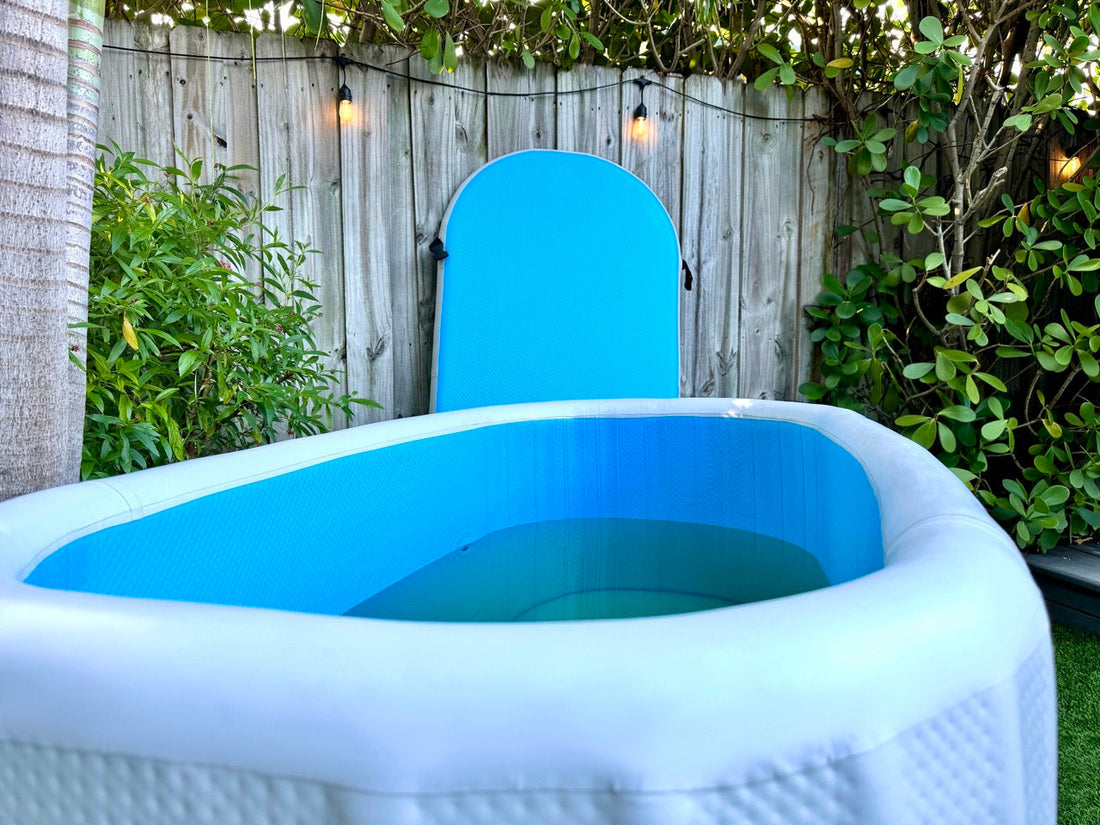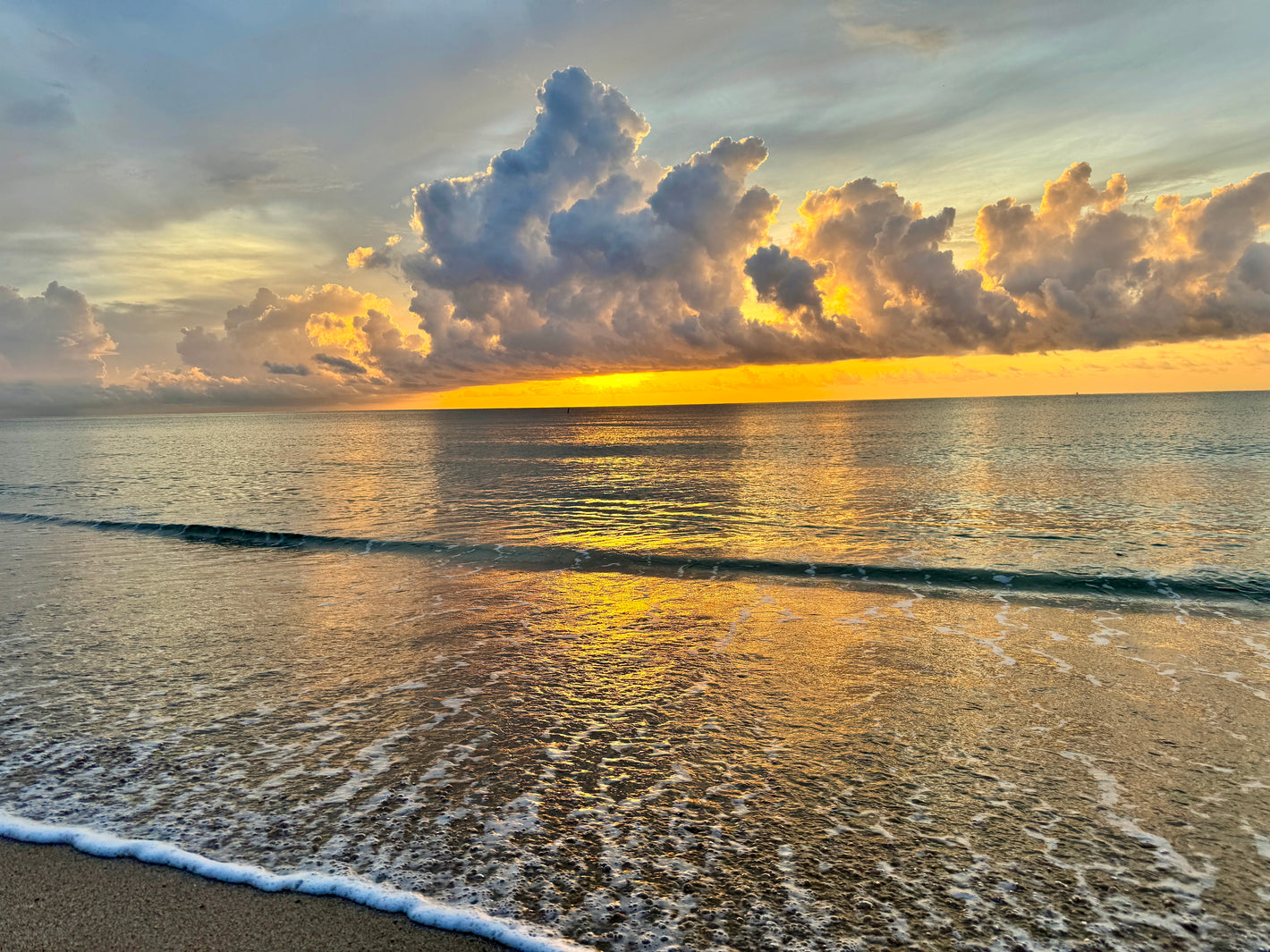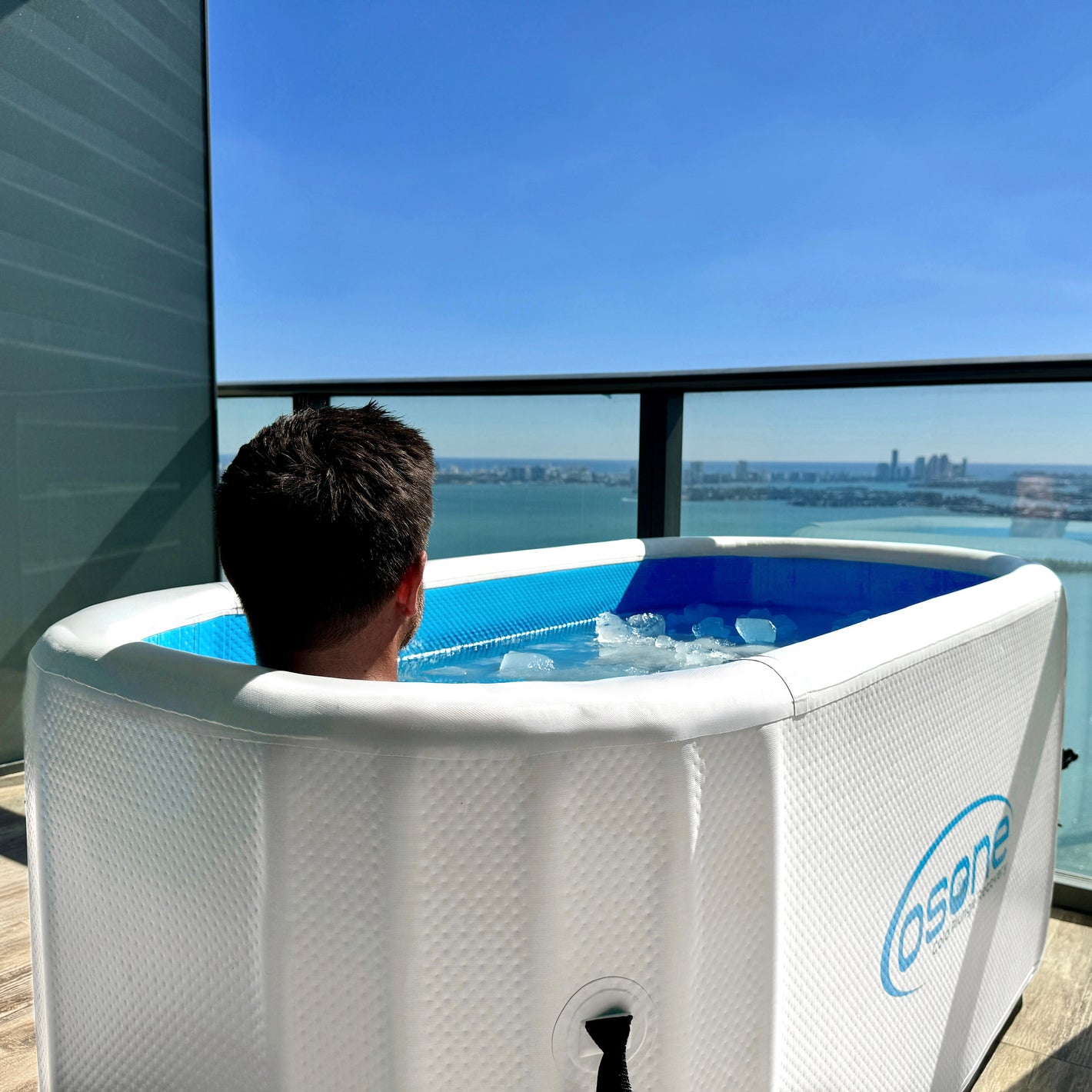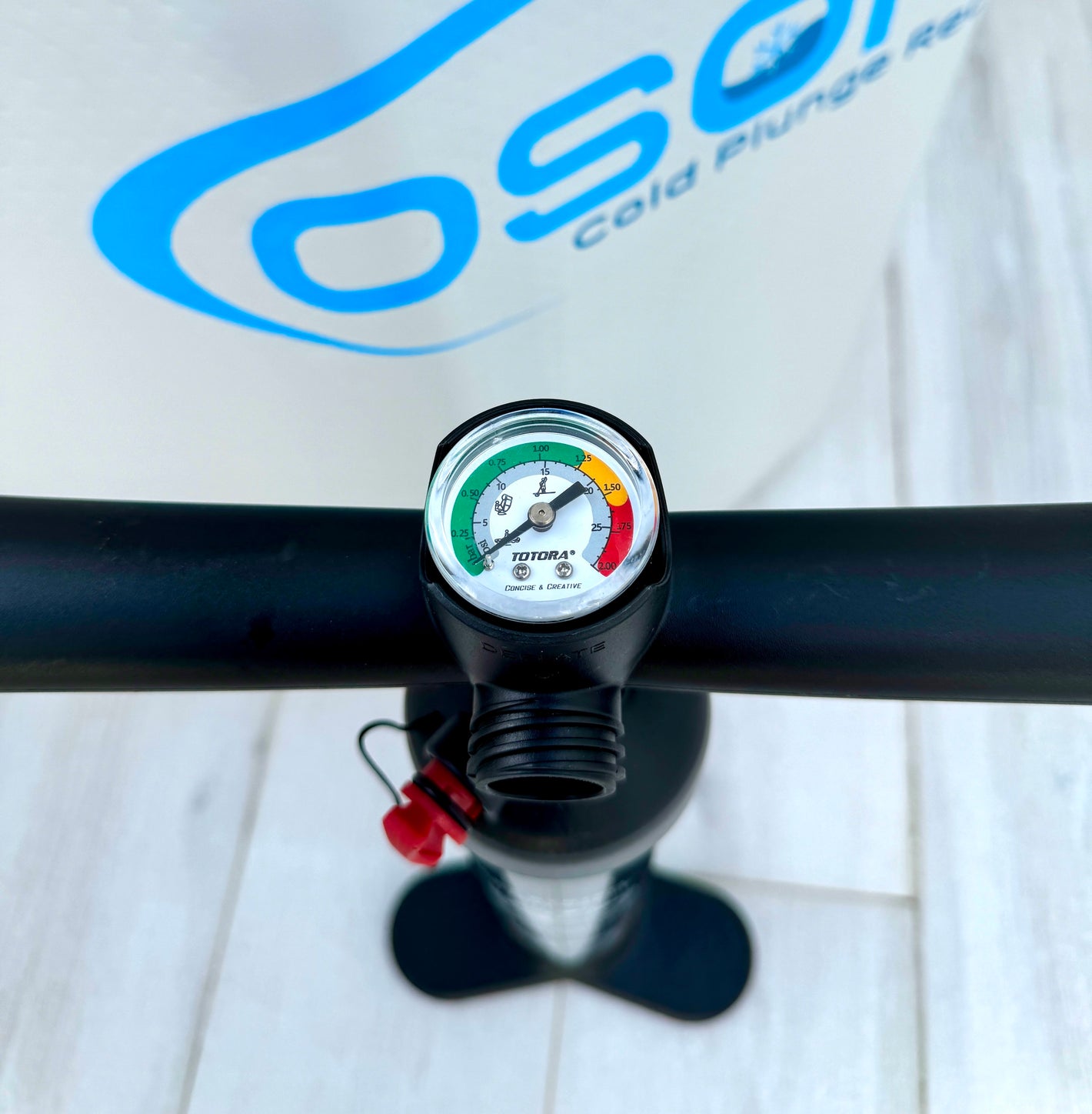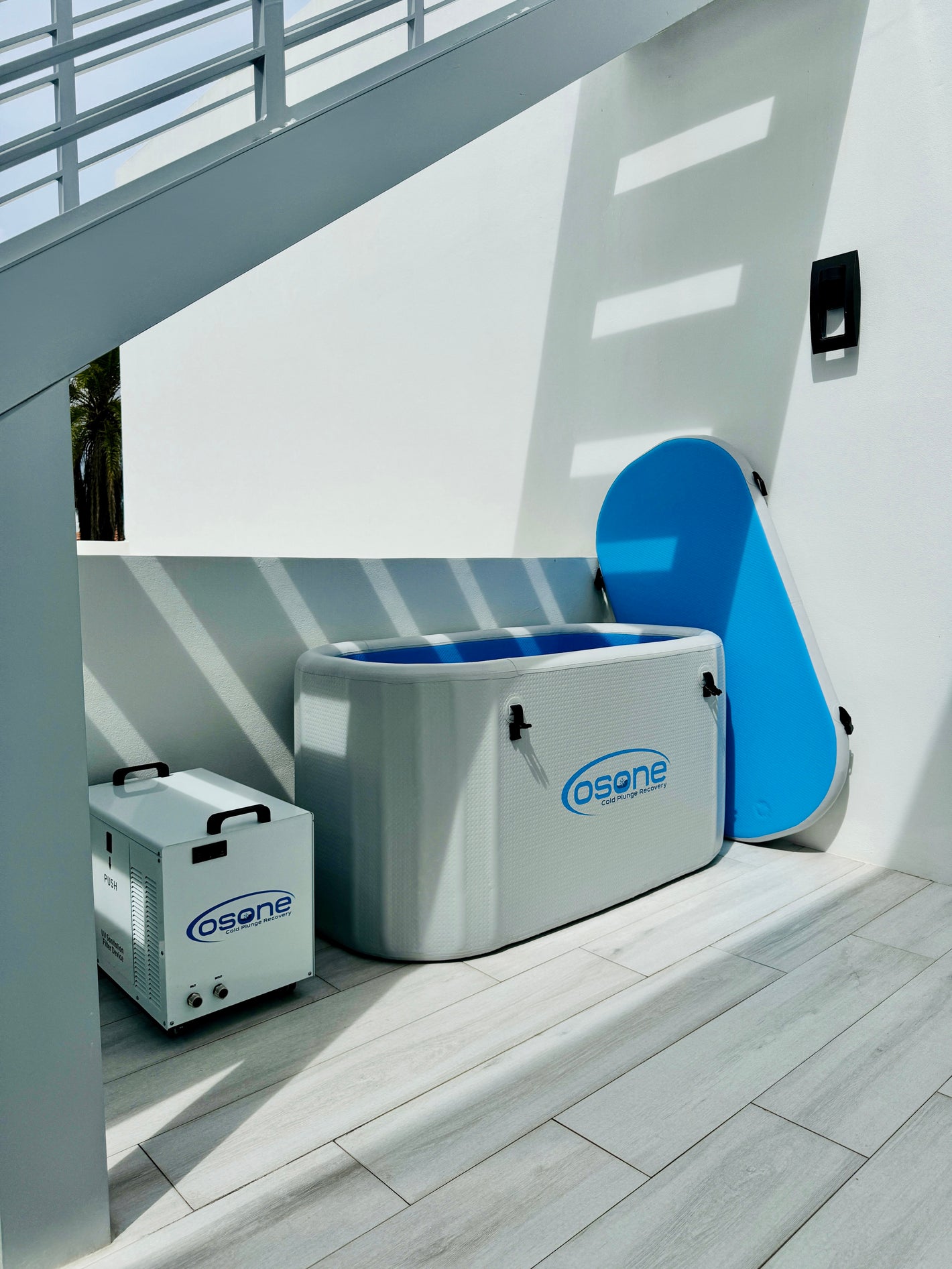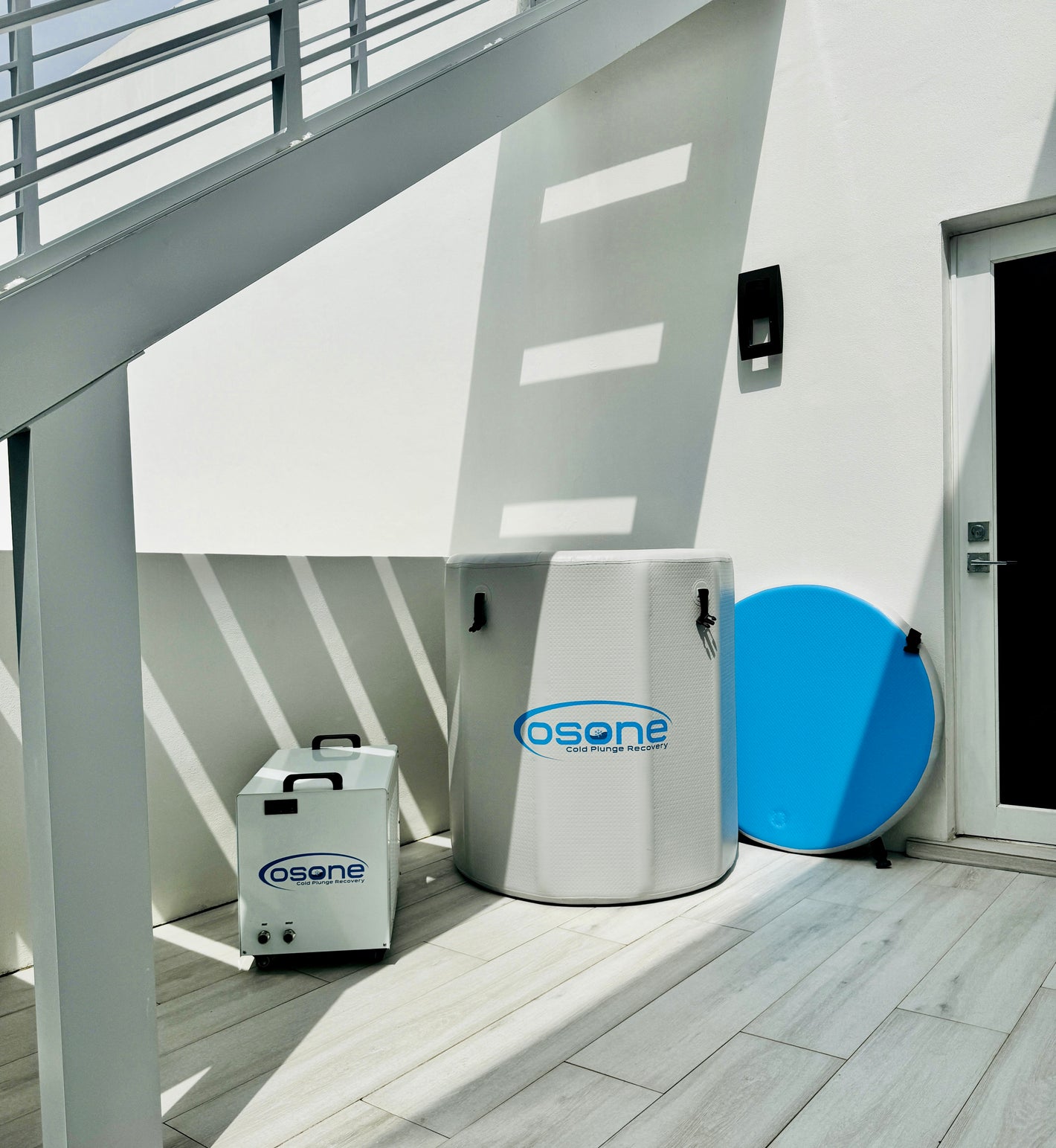We've all heard the term "getting started is the hardest part" and "pain is temporary." The mere thought of submerging into a body of water that could potentially be as cold as 39°F and doing it willingly seems insane, at first.
If we didn't believe in the science, we wouldn't be doing what we're doing. At OSONE, we believe in the lifestyle and the benefits that come with cold plunging. We believe we can convince even the hardest critics that this age old practice can improve your overall well-being. Though cold plunging might appear overwhelming, there are strategies to slowly acclimate yourself to the practice making it less daunting and a journey in resilience and perseverance.
We outline a gradual 8 week approach transitioning from a relatively mild 59°F to a brisk 39°F. Get started on your journey!
*Each person has a different tolerance level. It is crucial you listen to your body. If you have pre-existing medical conditions, consult with your doctor prior to starting cold plunge.
8 Weeks | Time & Temperature Targets
How often should I Cold Plunge?
We recommend cold plunging 3 to 4 times per week to start. This frequency will not only help adapt your body to the cold but also kick-start a new routine. Ever hear you need to do something for 30 days in order to get it to stick? We're confident the next 8 weeks will unlock both physical and mental benefits to keep you on the path to 39°F.
Week 1-2 | Brave the Plunge
Begin your cold plunge journey by setting the water temperature to 59°F. Aim for 7 minute sessions focusing on steady, deep breathing to calm the initial shock to the system. The first 30-60 seconds will be the hardest. You will notice after the 1 minute mark that your body starts adapting to the cold. During this phase, the goal is to become comfortable with the new routine and to start experiencing the initial benefits: enhanced alertness and invigoration.
Keep in mind that after the initial acclimation phase, you will be gradually reducing the water temperature by 3°F each week. This gradual reduction will help the body slowly adapt to colder temperatures, making the transition smoother and more manageable. As you become more comfortable with lower temperatures, you will also start adjusting the duration of your cold plunges. Reducing immersion time can help mitigate the intensity of the cold as temperatures continue to drop.
Week 3-4 | Feel the Rush
By week 3, the water temperature should read 53°F. Decrease immersion time from 7 to 6 minutes, maintaining focus on deep breathing and relaxation techniques. To read more about breathing techniques, click here. At this stage, you should be noticing an increased tolerance to the cold. This is the point you may start asking yourself if you can dip your face. You can and you should. Initially we recommend 30 seconds with your face under water and gradually building up from there. We like to do this at the end once the body is acclimated to the temperature and you're willing to push yourself a little bit more to end the session. 40°F, here we come!
Week 5-6 | Embrace the Cold
By week 5, the water temperature should read 47°F. Cold plunging in the 40's is a significant milestone and should be celebrated. Reduce immersion time from 6 to 5 minutes. This adjustment helps acclimate further to colder temperatures without overwhelming the body, maintaining the balance between challenge and comfort. You may feel inclined to cold plunge the face for 60-90 seconds. The important thing is to listen to your body. We suggest doing this at the end to finish out the session.
Week 7 | Feel the Benefits
By week 7, aim to lower the water temperature to 41°F with immersion time at 4 minutes. This phase is crucial for preparing the body for the final drop in temperature. It's important to listen to your body and ensure you're not pushing beyond your comfort and safety limits. This range can provide the full spectrum of benefits associated with cold water immersion and requires careful attention to your body's response and willingness to adjust based on comfort and safety.
Week 8 | Unlock Your Best Self
At this stage, limit immersion time to 3 minutes to ensure safety and to prevent risk of hypothermia. The intense cold will provide a robust stimulus to the body, offering the potential of significant benefits. To submerge in water temperatures in the 30's is a HUGE milestone. You're one of the few who have mastered mind over matter. At this point, you should be feeling the full benefits of cold plunge. Welcome to the Osone!
Tips for Success
- Consistency: Regular practice is key to acclimating to cold temperatures. Aim for consistent sessions: start with 3-4 times per week to build routine and work up to daily plunges, if possible.
- Mindfulness & Breathing: Focusing on deep, steady breathing helps manage the initial shock and discomfort. Mindfulness can also enhance the experience, turning it into a meditative practice.
- Gradual Progression: Avoid rushing the process. Gradual adaptation to colder temperatures ensures a safer and more enjoyable experience. Good things take time.
- Post-Plunge Warming: Develop a routine for warming up after each plunge, such as walking outdoors if it's a nice warm day or wrapping up in warm clothing to gradually bring your body temperature back to normal. Do not immediately take a warm shower.
- Health Considerations: Consult a healthcare provider before starting cold plunging, especially if you have underlying health conditions.
- If you fall out of routine, it's ok to start the cycle again. Heard of muscle memory? You may be surprised how much quicker you can get back down to 39°F once you've done it before. Starting is the hardest part.
Getting comfortable submerging the body into ice cold water requires patience, resilience and a mindful approach. By gradually decreasing the water temperature and immersion time, individuals can safely explore the benefits of cold plunging while minimizing the risks. With each plunge, the body's tolerance to cold increases, potentially unlocking a range of physical and mental health benefits. The key to successful cold plunging lies in listening to your body, ensuring safety, and embracing the process with an open and resilient mind.
General Safety Warning
Prioritize safety throughout the process of acclimating to colder temperatures. Always listen to your body and be willing to adjust the temperature and duration, as needed. Signs of hypothermia or excessive discomfort should not be ignored. After cold plunging, it is recommended to warm up with natural ambient temperatures so you can continue to indulge in the cold plunging properties.

